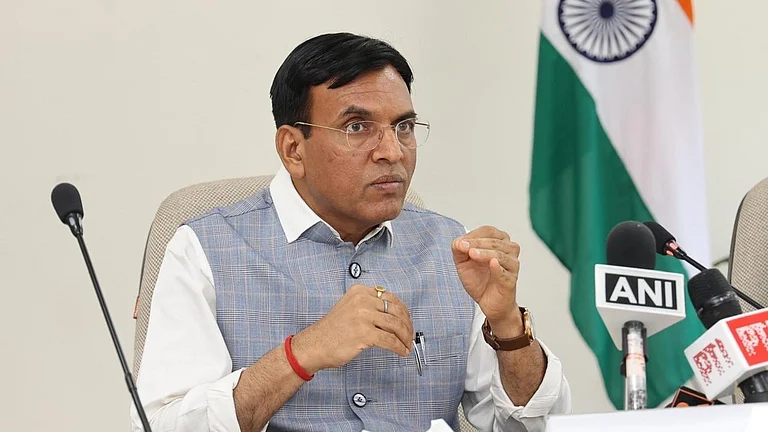Some days we are so gutted that the pain leaches into the soul. December 19, 2021, was one such day for Jas Kalra, a social activist from Gurgaon. That day his father suffered a heart attack and passed away.
Not just trying to cope with his grief, Kalra suddenly realised he would have to take care of 550 people. “I was just 21. The same day, I got the responsibility of taking care of 550 people. Till then, I had never even taken care of a puppy,” he says.
Kalra Sr, a social worker, had in 2008 founded The Earth Saviours Foundation (TESF), a non-governmental organisation (NGO) to help the homeless. It runs two shelter homes in Haryana’s Bandhwari and Mandawar villages. Today, the shelters are home to around 1,200 people.
Baptism by Fire
Things turned difficult for Kalra in the beginning. “TESF was running thanks to my father’s credibility. After his death, the organisation’s credibility was lost. People who were associated with my father left; from around 1,000 well-wishers it dwindled to 20,” he says.
The biggest problem was funding. Most donors turned wary given Kalra’s young age. “Once a man said, ‘The kid has come for pocket money’,” he recounts.
So, how did he manage? “Sheer perseverance. People would keep saying that he is just a kid. But Jas sir proved it wrong. He has devoted himself 24/7 to the organisation,” says Babita Rawat, a social worker with TESF, for the past eight years.
Now, Kalra’s mission is to build a larger shelter home in Mandawar, the construction of which is already underway. The new shelter home is spread across 5 acres of land, with 12 double two-storey buildings, each capable of housing 70–100 residents.
According to the 2011 Census data India has a homeless population of 17,73,040, with 9,38,348 in urban areas and 8,34,692 in rural areas
Last year, Kalra claims that his NGO re-united more than 500 people with their families and cremated over 3,000 unclaimed bodies. Out of the 1,200 people in the NGO, many have been referred via hospitals, government’s social welfare department, court orders and police. Around 80% of the people in the shelters have learning disabilities.
While there are people from all walks of life in the shelters, what is disheartening is that most are old and have been abandoned by their children, says Kalra. “We are all cruel, irrespective of class, caste or religion. And this cruelty manifests itself when times are tough,” he says.
According to the 2011 Census data India has a homeless population of 17,73,040, with 9,38,348 in urban areas and 8,34,692 in rural areas.
Speaking about Jas’s work, Indu Prakash Singh, a social worker who has been working with the homeless for over 25 years and has authored books on this topic, says that there should be more people like Kalra to solve the rampant crisis of homelessness in the country.
“I’ve heard about his admirable work supporting elderly and destitute individuals. We need more people like him in the country—compassionate individuals committed to helping those in need,” Singh says.
Healing Touch
So, what made Kalra take up this role? After completing his schooling from Shikshantar School in Gurgaon he went to the University of Melbourne in 2020. “There was exposure and comfort, but there was the desire to give back something to society. That’s when I decided to come back to India and join this organisation,” he says.
For Kalra, his father is his role model. Following his footsteps was challenging. But what kept Jash going is the fire in his belly. The desire to help people navigate the pain of abandonment. This includes feeding them, giving them shelter and if necessary proper medical treatment.
Kalra believes that all of us should be prepared for uncertainty. “There are people from all walks of life in our shelter homes including people who have been [Indian] Air Force [servicemen], Indian Administrative Service [officers], chartered accountants, employees of embassies. It is delusional to think that we won’t be abandoned. We don’t know what the future holds for us,” he says.
For Kalra, it has always been about resilience. Did he ever doubt his strength or waver from his purpose? “Four days after my father passed away, my younger sister was crying in my arms. That same day, my uncle told me that I should take on as much responsibility as I can,” he says.
Deep inside Kalra knew he had the strength. The strength to take care of people. And he hopes his small acts would make society that much more humane.












